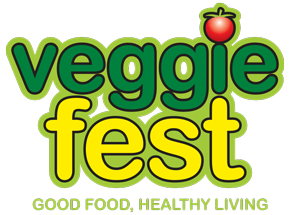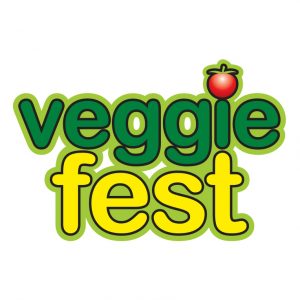Yes, you heard me correctly. Whether you’re going vegan for health, environmental, or ethical reasons – or all of the above — it’s now easier than ever to enjoy a healthy and satisfying vegan lifestyle.
Of course, any change of routine has its challenges, and veganism is no exception. For most people, the pushback comes down to a fear of not being able to find food options that are healthy, satisfying, and available. The good news is that a simple internet search will present an encyclopedia of information that will quickly ease your mind and confirm that the vegan diet is nutritious and healthy, environmentally responsible, and easier than ever to adopt.
I’ve been a committed vegetarian since 1976 – ever since a group of my 10 closest high school friends all agreed that being vegetarian was a “nicer way to live.” At that point, like many of us in the ’60s and ’70s, going vegetarian usually had an ethical basis since the research around health, nutrition, and environmental benefits was still in its infancy. The biggest struggle back then was availability – namely, finding nutritious and tasty vegetarian options at grocery stores and restaurants.
As someone who travels extensively as part of my career, it was initially hard to find an acceptable meal. I found myself bringing sandwiches, bags of nuts, and dried fruit with me because I could never feel confident that an airport food court or highway restaurant would have much to offer. If I had to go out to dinner with a client or co-worker, it was extremely difficult. At that time, though, I ate cheese, which allowed for more options. After all, you can always find a slice of pizza!
In the 40+ years that followed, I noticed a major trend around the globe, with vegetarianism (and veganism) becoming more mainstream. Suddenly, I could find huge selections of meat-free alternatives in my local supermarket without having to scour the yellow pages (remember those?) for a health food store. More and more restaurants not only offered vegetarian options but vegetarian menus! Eating a plant-based diet was no longer considered “weird” or an imposition (outside of going to Aunt Joan’s house for Thanksgiving dinner!).
Then, about 4 years ago, my wife and I finally made the transition to veganism. At first, we were faced with the same initial concerns: Could we find healthy and nutritious food to eat? What about when we traveled? And now what is Aunt Joan going to do?
However, the same trends we saw in the vegetarian community, have now manifested in the vegan world. I continue to be amazed at the number of purely vegan selections I find in restaurants and mainstream supermarkets. Many restaurants, even if they don’t have a purely vegan menu, can certainly accommodate vegan options, and more often than not, the chef is excited about the challenge of creating a special vegan meal (and it’s usually not the chef’s first time!).
Furthermore, in the age of social media and APPs for our smart devices, the same encyclopedic information I referenced above is now available at your fingertips (literally). Instead of having to do a search, there are dozens of APPs that will use geo-location to show you what restaurants and stores are near you, how they’re rated, and whether they are all vegan or vegan “friendly.” In fact, you can even stay at hotels/resorts that are exclusively vegan. Just do a quick search; all the information is there.

To help get you started, here are 5 quick tips to make the transition easier:
- Remember WHY you chose to go vegan. Was it for health reasons? Environmental? Compassion? Use your primary reason as a touchstone to remind you why you made the decision. It will keep you steadfast in your commitment. It may not always be easy, but if you’re guided by a conviction, it will make the transition easier for you during those tough moments (which I promise will become fewer as time goes on).
- Drink water and pack snacks. During your initial transition to veganism (whether directly from a meat-centered diet, or even from a vegetarian diet), expect to be hungrier than usual. Plan on the occasional snack throughout the day – maybe some nuts, or fruit, and drink lots of water (which often helps reduce the effects of hunger).
- Do research, especially before you take a trip: Determine where the best options are that align with your tastes and preferences, and put them in your calendar (one place for lunch; one place for dinner). Instead of waiting until you’re hungry and having to make a quick decision, you’ll have already determined where you want to go. Better yet, the place and address will already be in your calendar and easily accessible by the Map program on your smartphone.
- Seek out to like-minded people. Look for the local vegan society and attend one of their events, or if you’re in the Chicago area, check out the Veggie Fest Presents! events hosted on Saturdays in Lisle, Illinois. Develop friendships with people who share your passion. Learn new recipes. Host a vegan-only pot-luck party. Think of this as an adventure and above all, have fun.
- Determine your level of “militancy,” and make decisions accordingly. Sometimes it’s easier to “do your best” and leave the rest. Maybe, in your life, the occasional (unknowing) traces of milk or cheese in your food may not be the end of your world. Perhaps, any contact with dairy, for you, would be entirely unacceptable. Make those decisions according with your own compass, and “Live and Let Live, Baby.”
So, fret not! Unless you live in an igloo in the arctic tundra, there’s really nothing to fear about going vegan. The options are endless. You’ll have all the support you need. You’ll be doing a service to your body, to the environment, and most of all, to the animals. And for those of you who do find yourselves on that frozen tundra, we hope you’re enjoying a permafrost salad with a vegan-friendly polar bear . . .
~ Doug Kruger for the Veggie Fest Team







